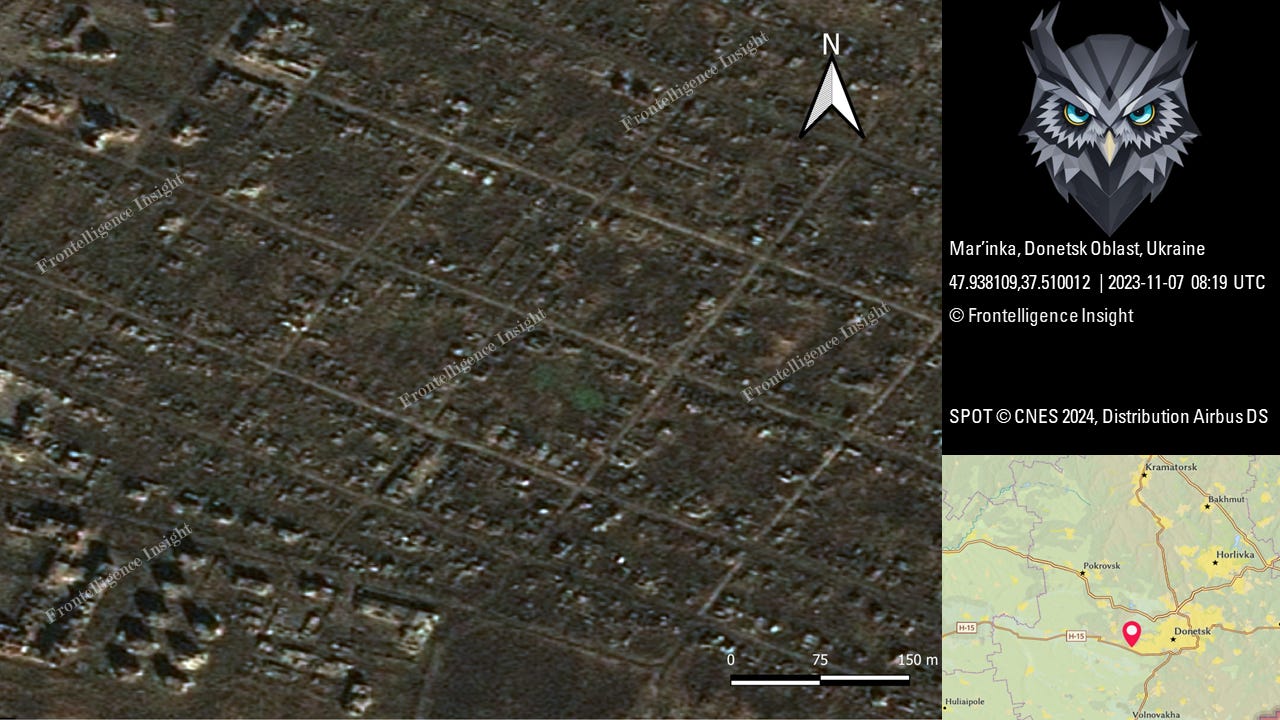In late 2022 and early 2023, as Ukraine grappled with shortages of artillery ammunition, Frontelligence Insight observed a consistent trend: Russian forces grew complacent, keeping their artillery stationed in static positions for extended periods—sometimes for months. This complacency stemmed from Ukraine's inability to effectively counter and suppress Russian artillery. The situation persisted until Ukraine initiated targeted strikes against these artillery positions, predominantly utilizing HIMARs and artillery and occasionally employing FPV drones. The crucial supply of artillery ammunition from South Korea, facilitated by the US, played an important role, enabling Ukrainians to neutralize hundreds of artillery pieces throughout the year.
As we assess developments in 2024, our team has identified a resurgence of this pattern. In January alone, Frontelligence Insight recorded over 14 concentrations of artillery and enemy forces, reminiscent of observations made in Spring 2023. Our analysis suggests that this resurgence signals a decreasing fear among Russian forces, possibly fueled by renewed ammunition shortages on the Ukrainian side.
In this specific instance, we can see vehicle revetments, some stocked with supplies and others hosting vehicles. Our team has monitored this site, which has remained operational for multiple weeks. The notable gathering of equipment in a compact area is situated not far from the frontline.
It is important to note that this does not imply a complete loss of Ukraine's capacity for counter-battery fire. Ongoing open-source intelligence (OSINT) projects continue to document Russian artillery losses. However, the pattern indicates a persistent challenge of insufficient counter-battery fire. Regrettably, this situation empowers Russia to execute a well-known approach: the systematic destruction of urban areas, rendering them indefensible and subsequently asserting a claim of "liberation" of the settlement.
Mar’inka stands out as the most notorious instance, where Russian troops systematically obliterated the entire city, leaving almost no trace of any structure or dwelling. The relentless bombardment reduced Mar’inka to complete oblivion, only for the aggressors to subsequently claim liberation.
The objective is clear — to broadcast to the world that Ukraine is on a path to defeat. If the current trajectory persists, Russia may sustain this approach convincing Western nations that regardless of assistance, Ukraine is an unwinnable and lost cause as the war continues.
Another imporant aspect our team wishes to emphasize is the role of FPV drones. Despite initial enthusiasm hailing FPVs as a revolutionary tool capable of replacing traditional artillery, the current reality underscores that FPV drones, in their current developmental stage, do not present a comprehensive solution to counter enemy artillery. Based on our observations, numerous artillery pieces are positioned at distances ranging from 15 to 24 kilometers away from the frontline, rendering them beyond the practical reach of the majority of small FPVs—unless equipped with retransmitting drones to boost their signal. Additionally, factors such as adverse weather conditions and electronic warfare (EW) interference can significantly impede FPV effectiveness over such distances, even with signal reinforcement.
While there have been many instances of successful FPV engagements of the enemy artillery, these cases remain limited in number and are not widespread enough to exert a substantial impact on the overall situation. We anticipate a shift over time, but at present, the overall impact of FPVs in counter-battery engagement is too small.
The potential introduction of GLSDB to Ukraine could indeed mark a significant turning point, although it remains premature to draw definitive conclusions, especially considering the untested nature of this weaponry in a large-scale conventional conflict.
It's noteworthy that Ukraine is not solely reliant on Western support; it has undertaken efforts to manufacture its own 155mm howitzers, specifically the 2S22 Bohdana. According to Ukrainska Pravda, as reported by Defense Express, Ukraine currently operates a fleet of 30 systems, with production ongoing at a rate of 6 systems per month. The 2S22 Bohdana has demonstrated a confirmed engagement capability at a distance of 35-40 km, sufficient to safely target a majority of Russian artillery. However, the challenge lies in the sheer volume of the enemy's artillery, numbering in the thousands. With only 30 howitzers at Ukraine's disposal, the impact on the overall situation is very limited.
In summary, our team believes that Ukraine's increasing difficulty in effectively countering Russian artillery is becoming more evident. While the situation isn't described as catastrophic, it does provide Russians with an opportunity to inflict substantial damage on Ukraine and undermine external support. Emergency measures by the EU or the US, delivering additional artillery at least to ease some pressure, could help mitigate these problems.






Another insightful and helpful piece, thanks
how do you capture a defended city in modern warfare without levelling it. this is not a dig on Russian. its bad commentary
it's suicidal to attempt Street to street fighting
without overwhelming artillery barrage
it's why it's called the god of war
Germans levelled stalingrad
russians levelled Berlin
Americans levelled fallujah
it's the standard operating practice